Terms Used In Protection Dog Training
If you are new to protection work, these terms will be helpful for you during your training journey. Regardless of whether you are training a dog for police service or for sport competitions, these terms will become a part of your vocabulary.

Prey Drive
Prey drive is the desire to pursue, bite, and vanquish. Prey drive is stimulated or triggered by movement. I have an extensive article drives titled Can I Train My Own Dog in Bite Work?. If you are interested in protection work, I highly recommend you read it.
If you really want to learn about prey drive, I recommend you study from my training DVD titled The First Steps of Bite Training or take the online course.
Play Drive
Play and prey drive are very close to the same thing. While there is a subtle difference between the two, many trainers (especially in Europe) will refer to play drive when they mean prey drive. The fact is that a dog can have a nice temperament and have play drive but little prey drive. This can be seen in dogs that are very willing to play with their handler but don't really have a lot of drive to chase or make prey by playing tug.
Locked in Prey
A dog with good nerves that is worked too long in prey drive will become locked in prey. It's very important that trainers understand this process. These are usually good dogs that become so focused on their prey item (either the sleeve or the suite) that they zone out during the work and develop almost a fanatical intensity towards their prey.
Once a dog is locked in prey, the handler has a difficult situation on his hands. What he has actually done (by mistake) is raise the threshold to defense to a point where it's almost impossible to add defense. The dog has become progressively more and more independent and is harder to control. It becomes a dog that will take a great deal of abuse from a decoy by developing the mindset that "I can take anything you give me because I know that if I do, I will get my prey in the end."
What often happens is that the trainers will suppress the prey drive with pressure. When that happens, fight drive often appears. One would initially think that this is OK because in reality, this is what we are trying to accomplish. However, the problem is that this fight drive is very situational and not spontaneous.
Threshold
All behaviors have thresholds. A threshold is the level of stimulation that triggers a certain drive or behavior.
It is impossible for a new helper to work dogs in defense unless he has a clear understanding of the thresholds for prey, defense, and avoidance on each dog he works. If your goal is to learn to work a dog in defense, you need to start to learn everything you can about recognizing thresholds. Knowing when a dog is approaching his threshold to avoidance is critical for defensive training.
In dog training, we will talk about low, medium, and high thresholds.
For example, one dog is said to have a low threshold to avoidance when it takes very little to startle that dog and cause it to run away. While another dog is said to have a high threshold to avoidance because it takes a great deal of pressure and stress to cause it to run away from a threat.
It's possible to evaluate the temperament of a young dog by watching how he reacts to his surroundings. By establishing the dog's threshold level to prey, defense, avoidance, and fight we can determine what a puppy will be like as an adult.
For example, we do not want to see high thresholds to the behaviors that we want such as prey and fight drive. But we do want to see high thresholds for undesirable traits like survival, self-defense, and flight.
Sometimes with proper training, dogs with low thresholds can be conditioned to learn what works for them to accomplish sport work.
The problems arise with high threshold dogs. When wanted behaviors need to be forced from a dog to accomplish the training, there is always a risk that the next time that dog comes out for training, it will not spontaneously display the behavior. When that happens, the threshold for that behavior has just gone higher.
In all of our work, training only takes place when the dog elects to display the behavior, NOT when the decoy evoked the behavior.
This can be a complicated subject because the dog can display so many subtle signs as it approaches a threshold. Learning to read these signs can take a lifetime of work. As we progress through training, it will become more and more critical for the helper to understand the dog's thresholds for stress.
Fight Drive
The term fight drive is one of the most misused terms in dog training today. What I consider fight drive goes by different terms depending on who you talk to. Some people call fight drive aggression, active aggression, or defense.
Fight drive is the willingness of a dog to fight a human. It is a factor of experience and genetics that results in a very self-confident dog that is always prepared to bring the fight to the man. Unlike defense, fight drive is a very comfortable place for a dog to be. It's a combination of prey, defense, and the experience gained through training or real-life encounters. A dog with fight drive knows that it can beat any man, under any circumstance, and in every environment. A dog with fight drive sees a decoy as a fighting partner.
Fight drive cannot be trained into a dog that is not genetically capable of developing it. Handlers can train dogs in prey and they can train dogs in defense, but unless those dogs have inherited the genetics to provide the correct nerves and thresholds for the work, they will never develop fight drive.
A perfect example of this is the German Shepherd show line dogs who go out and get Schutzhund titles. 99.9% of these dogs do not have the genetics for fight drive. That's why we never see their progeny working as police dogs.
It's important to remember these two points:
- Prey + defense = power and focus
- Prey + defense + genetics + experience = fight drive
With this formula in mind, you can see why it's impossible for a young pup of 9 or 10 months to have fight drive. No dog that age has had enough experience to have been able to develop fight drive. They may demonstrate occasional first signs of fight if their training and genetics are correct, but they certainly do not have fight drive.
A dog working in fight drive seeks eye contact with the decoy and invites it in return. He does not focus on equipment but rather on the man wearing the equipment. These dogs want physical contact with decoys or suspects and are willing to use all of their resources to battle a man. They don't hesitate to bite the legs, the shoulders, or back. Of course, in sport work, this is discouraged during training.
The bark of a dog in fight drive is a deeper free-flowing bark that radiates self-confidence. Once you have heard this from a really strong dog, you will always remember it. When the decoy slips the sleeve, the dog ignores the equipment and refocuses on the man, inviting a continuation of the fight.
When you hear people talk about fight drive being defense, they are not exactly correct. The difference in the two drives is the way in which the dog views the helper and the comfort level of the dog during the work.
As a dog progresses through training, its view of the helper changes. Initially, in prey work, the helper is a friend that plays tug or is that person that's always trying to steal the prey. The defensive helper now threatens the dog and is someone to be suspicious of. In defensive training, the dog views the helper as a person that brings stress to his life.
As defensive training progresses, dogs with the correct genetics, are taught how to defeat the helper in every circumstance. Through these many victories, the dog slowly changes his view of the helper. He begins to see the helper as a fighting partner, as someone to get mad at and not someone to be nervous of. When this begins to happen, we say that the dog is developing fight drive.
We can also define fight drive as the interaction of prey and defense where the dog carries the forwardness of prey with the intensity of defense.
Very few dogs have intense fight drive. Those that do are very self-confident dogs that have extreme prey and play drive. This is often coupled with extreme possessiveness of what it perceives as its prey. This can even be manifested in the dogs becoming dominant in the hands of an inexperienced handler. Problems arise when handlers try to take prey articles away from these dogs. Many of these dogs never show the typical signs of defense. They fight with a helper not to take possession of the sleeve but to dominate the decoy in a fight. Until someone has seen this in person, they probably will not understand what true fight drive is.
There are a couple of points to remember concerning fight drive. First, it's impossible to have fight drive without prey drive. A dog without prey cannot unload the stress of defense.
Second, it's also impossible to have fight drive if a dog with great nerves and great prey is never worked in defense.
Channeling
If you are new to this training, it's only a matter of time before you hear someone say they need to channel that dog into prey or channel that dog into defense.
Channeling means that the helper and handler do something to cause a dog to switch from one drive to another. For example, when we stress a young dog in defense we will always try and channel him into prey after he provides us with the desired defensive response. Another example is when an inexperienced helper mistakenly puts too much pressure on a dog.
It's a mistake to let a dog learn to move into prey at the sight of a sleeve and then into defense at the sight of a helper without equipment.
Pack Behavior
All of our dogs are pack animals. We can never take this out of the dog. Many people who only own one or two dogs may never notice the pack instincts in their dogs. But if they add a third dog to their pack, the pecking order becomes very noticeable.
A common belief that many new trainers have is that a dog should be obedience trained before protection training begins. This indicates a misunderstanding of pack behavior. Formal obedience training creates a strong pack instinct with the handler being the pack leader. While we need to have our dogs recognize the handler as the pack leader and we need to have the dog mind, we do not need a young dog to be dominated by a pack leader. Too much strict obedience at a young age causes the young dog to look to the handler for guidance in everything he does. This has a negative effect on his bite work. These dogs are often hesitant to engage the helper because they are distracted by the handler. They are always looking over the shoulder to see if they are going to be corrected for doing something wrong.
Dogs who only feel secure when they are near their handler have a strong pack instinct.
Rank or Dominance
A dog is considered to be ranked if he has a desire to increase his pack order through aggression. Some people call this dominance. I often hear puppy customers ask for the most dominant puppy in the litter. I always try and explain how wrong they are in their thinking. Rank behavior bleeds over into apprehension work with the dog challenging the authority of the handler. It interferes with the personal relationship between the handler and his dog and has an overall negative effect on the working ability of the dog.
Dominance is only acceptable if the dog is willing to accept your position as pack leader. The bottom line is that dominant dogs are always sloppy working dogs.
I have written and posted articles on Dealing with Dominant Dogs and I have a plethora of Q&As on dominant dogs.
Guard Drive or Sharpness
A dog is said to have a higher guard drive when he is quick to bark at intrusions on what he considers his space. Some people will call this sharpness. Guard is an overlapping of dominance and self-defense in the dog's temperament. When you see it in a dog, it is very obvious. For example, I have a young dog whose guard drive is elevated when he is in his dog crate or my vehicle. When let out of the crate he does not exhibit overly aggressive tendencies.
Breeders in this country and around the world have made a mistake by not breeding a degree of sharpness into their working dogs. It took me a long time as a breeder to understand this. Dogs who have a small degree of sharpness make much better police service dogs and personal protection dogs.
We see a lot of sport dogs who have no guard drive. These dogs are so stable in temperament that they do not see an intruder in their home as a threat and will not even bark at them.
Stimulation
When you hear me use the word stimulation, I simply mean the helper is going to engage the dog in a way that will result in the dog going into either prey or defense drive.
The Grip
Anyone watching my videos are familiar with what I mean when referring to “the grip”. What we want to get across in these videos is that as we apply stress in defensive training, the grip is going to change. In defense, the grip will be firm but volatile. The defensive grip is usually with the front of the mouth. It's not unusual for a young dog with a full mouth grip in prey work to loosen some of the depth of grip in defense. Trainers need to have patience. They need to accept this with the understanding that the full mouth grip will return with experience and confidence.
Other trainers whose dogs have weak grips are impressed with the stronger grips that come in defense. I caution these people. While a firmer grip is normal in defense, accepting defense just to improve the grip is wrong. If the grip improves as a result of the wrong reasons, it isn't good training.
In training, we will teach the dog that one way to gain control is to grip the decoy during the work. In defensive work, he will learn that when he is off the sleeve, he is in conflict and under threat of attack.
Survival Drive
Survival drive simply means that a dog is put into a fight or flight situation due to the amount of stress that's placed on the dog.
Avoidance
Everyone that has come this far in training knows something about avoidance in their dogs. Most think avoidance is when the dog turns and runs from a threat. While this is true, there is a lot more to it than just running. Avoidance is an area of defense. It's motivated by fear with submission or flight. It is the result of too much stress. Submission is a large part of avoidance. This is the area helpers need to focus on. In a few minutes, we will have a section discussing some of the signs of avoidance.
Civil Work
Civil work simply means that we are going to do helper work without any protective clothing or sleeves.
Hard Dog
A hard dog recovers very quickly from stress. A hard dog can take a solid correction without acting like his life has just ended.
Soft Dog
A soft dog does not recover quickly from stress. It's a soft dog that does not require a very hard correction to mind. Soft dogs are sensitive and seem to get their feelings hurt very easily. Some people who acquire a soft dog think that this dog has been abused in the past. While this may be true, often it is not. It's a case of genetics, most dogs are born soft.
With proper training and genetics, soft dogs can develop into personal protection or police service dogs. A friend of mine had a soft police service dog for a patrol dog. This dog had several hundred bites in his career. He was just sensitive to the handler.
Weak Nerves
When I say a dog has weak nerves, I mean that it has a low threshold for stress. These are dogs that are very suspicious. They startle easily because they are nervous. This should not be confused with guard drive.
A dog with weak nerves is quick to bark at people and when it does, it shows a lot of teeth and gets the hair up on their back.
Dogs with weaker nerves need to be worked almost exclusively in prey. They need to gain self-confidence through prey work.
Strong Nerves
A dog has strong nerves when it does not perceive a helper as a threat. Strong-nerved dogs are very self-confident dogs that require a lot of pressure before they perceive a threat. These dogs need to be worked in defense at a much younger age. If they are not worked at an early age, they can easily become locked in prey.
Proper training requires the helper, handler, and training director to all be on the same page when discussing drives, temperament, and the working ability of a dog. Don't underestimate how important this section is to your training.


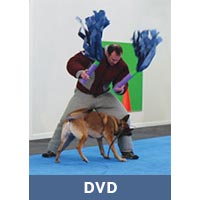
.jpg)
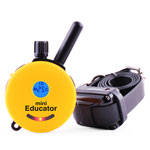

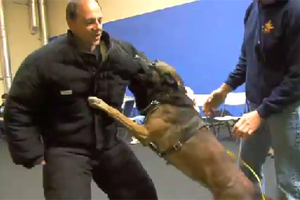

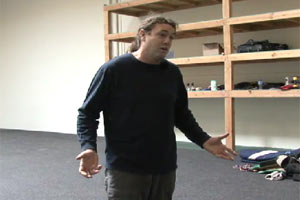
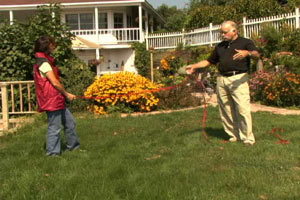
0 Comments
Ask Cindy
Sorry, adding comments is currently disabled.